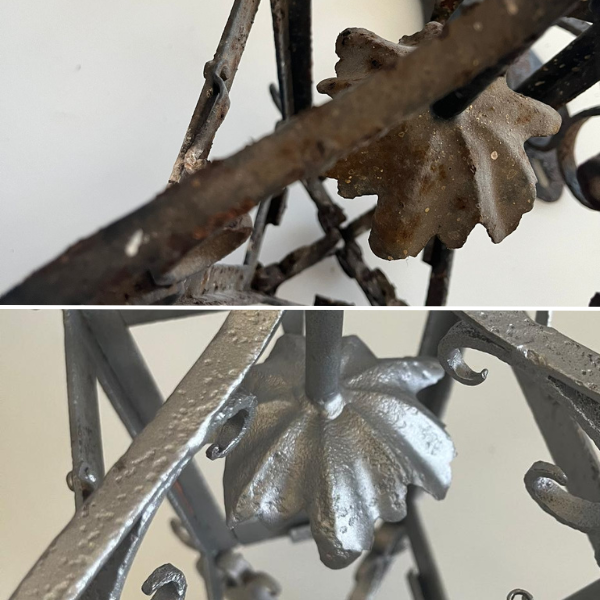Restoration of Ancient Objects: The Importance of Sandblasting
Reading time: 2 minutes and 30 seconds
In the vast landscape of restoration and recovery of ancient objects, choosing the appropriate technique is fundamental to ensure excellent and enduring results. Manual techniques such as sanding and smoothing are often employed. However, while these techniques can be effective in certain situations, they often require much more time and do not offer the same level of precision and uniformity as sandblasting.
Sandblasting: Precision and Efficiency
The technique of sandblasting, which utilizes the abrasive action of particles such as sand or glass beads, has emerged as a preferred option for removing paints, oxidations, encrustations, and other imperfections that have marred the surface of precious objects over time. One of the key features that makes sandblasting so valuable is its versatility. This technique can be applied to a wide range of materials, including metals such as iron, aluminum, bronze, and wood.
Contrary to common perception, sandblasting is a highly controllable and versatile technique when executed correctly. The key to achieving optimal results lies in selecting the appropriate abrasive and carefully adjusting the flow and air pressure. Additionally, depending on the diameter of the nozzle hole, the amount of abrasive released can be controlled, allowing the restorer to tailor the process to the specific needs of the material and object undergoing restoration.
Paint and Coating Removal
One of the most common uses of sandblasting in the restoration of ancient objects is the removal of old paints and coatings. Over the years, many objects may have been painted and coated multiple times, creating thick, opaque layers that conceal the original beauty of the underlying material. Sandblasting allows for the effective and uniform removal of these layers, restoring the surface to its original state and preparing it for new finishes.
Reduction of Oxidation and Encrustation
In the case of metals, oxidation is a common problem that can compromise the appearance and structural stability of ancient objects. Sandblasting offers an effective solution for removing rust, oxidation, and other superficial encrustations, restoring the shine and durability of the underlying metal. This process not only enhances the aesthetic appearance of the object but also preserves its structural integrity, prolonging its lifespan and historical value.
Preservation of Cultural Heritage
In addition to aesthetic and functional benefits, sandblasting plays a significant role in the preservation of cultural heritage. The restoration of ancient objects is not only a matter of aesthetics but also of preserving history and culture. Through the application of techniques such as sandblasting, it is possible to protect and valorize objects that might otherwise be destined for degradation and loss.
Conclusion:
In conclusion, manual sanding and smoothing are traditional techniques used in the restoration of ancient objects, especially in the case of wood. However, these methodologies have several limitations. Firstly, they require considerable physical effort and time, as the work must be done manually with sandpaper or other abrasive tools. Additionally, these techniques may be less precise and uniform compared to sandblasting, as they largely depend on the skill and experience of the restorer.
Sandblasting proves to be an important resource in the vast field of restoring ancient objects. Thanks to its versatility and effectiveness, this technique offers restorers a valuable tool to restore the beauty and durability of materials such as metal and wood. Through careful and professional application of sandblasting, it is possible to preserve and valorize cultural heritage for future generations, ensuring that the beauty and history of ancient objects continue to shine through time.









